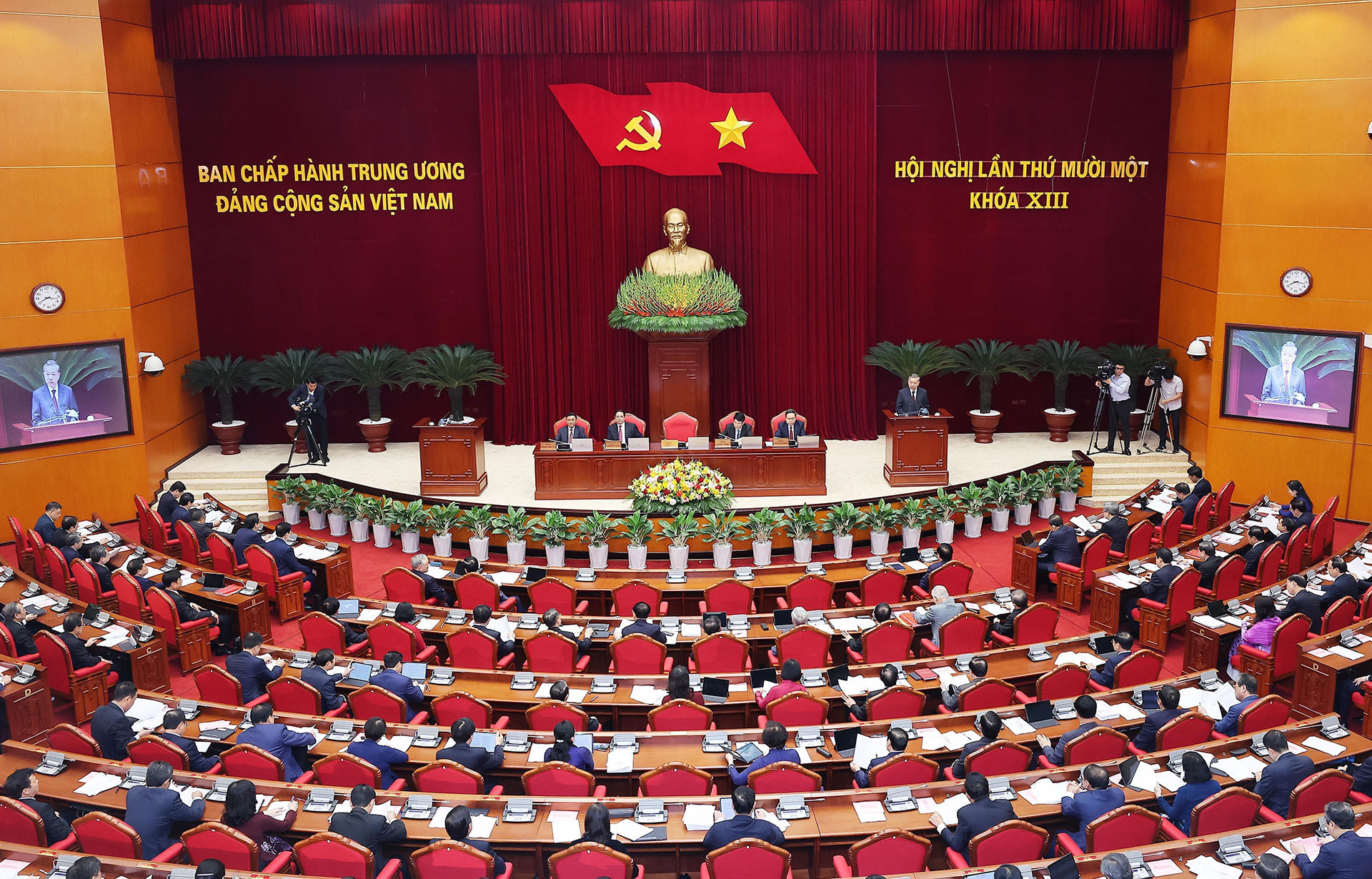In his opening remarks, General Secretary To Lam emphasized that the Central Committee will focus discussions on two key groups of issues.
The first involves continuing to reorganize the political system’s structure, administrative units, and the two-tier local government model.
The second focuses on preparing for the 14th National Party Congress and the elections for the 16th National Assembly and People’s Councils for the 2026–2031 term.

The Politburo will report on key personnel matters, provide updates on the country’s and the world’s current situation, and review major undertakings handled since the 10th Central Committee meeting. It will also present thematic reports on improving institutions and driving breakthroughs in science, technology, innovation, and national digital transformation.
General Secretary To Lam highlighted the urgency of the current context, which demands breakthroughs, decisive leadership, and unity from policy formulation to implementation. He called on all Central Committee members and attendees to show responsibility, contribute intellect, and help ensure that the conference meets its goals.
A key issue under consideration is the proposal to streamline administrative divisions, including merging provincial and communal units and discontinuing the district-level administrative structure.
Under Conclusion 127, the Politburo and the Secretariat have outlined directions to explore merging certain provinces, eliminating the district level, and consolidating many commune-level units. The plan aims to establish a two-tier local government system - comprising the Party, government, and mass organizations - ensuring compact, effective, and efficient governance.
For the provincial level, in addition to factors such as population and land area, other critical criteria will include the national master plan, regional and local development strategies, economic advantages, and long-term growth goals.
At the commune level, local governance models must consider diverse contexts - urban, rural, mountainous, lowland, island regions - as well as population size, geography, cultural and historical factors, and socioeconomic and security issues. Clear frameworks for roles, functions, organizational structure, and staffing must be developed.

During a March 28 meeting with revolutionary veterans, war contributors, and families with meritorious service from the Central and Central Highlands regions, General Secretary To Lam revealed that initial plans may reduce Vietnam’s 63 provinces and cities to around 34 through consolidation. This would also eliminate the district level and merge the number of commune-level units down to roughly 5,000.
The resulting administrative system would consist of three levels: central, provincial/city, and commune/ward.
The Party Committee of the Government will submit the official proposal to the Central Committee at this session for approval.
According to a draft resolution prepared by the Ministry of Home Affairs, 11 provinces will retain their current structure: Hanoi, Hue, Lai Chau, Dien Bien, Son La, Cao Bang, Lang Son, Quang Ninh, Thanh Hoa, Nghe An, and Ha Tinh.
The remaining 52 provinces, including four centrally run cities - Ho Chi Minh City, Hai Phong, Da Nang, and Can Tho - will be subject to restructuring and potential mergers.
Tran Thuong